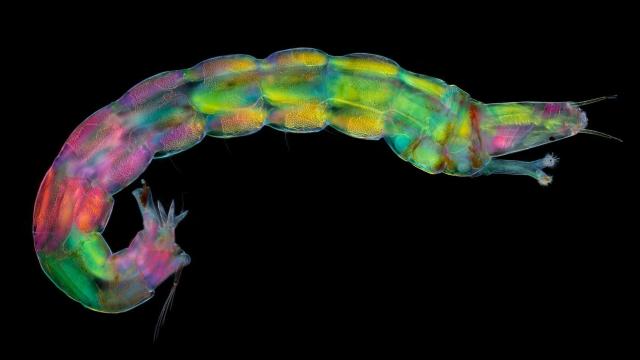The microscopic world is filled with as much terror and delight as the one visible to our pedestrian eyes. And for 47 years, Nikon’s Small World Photomicrography Competition has celebrated the tiny by showcasing some of the most memorable images taken under an optical microscope using a variety of different methods. Their latest annual selections were released this week.
The top winner is an incredibly detailed hand of a Madagascar giant day gecko in its embryonic stage of life — a feat that took many hundreds of photos to accomplish. Other images include the beginnings of a heart cell, a grotesquely beautiful slime mould, and an artfully posed daddy long legs.
Here are some of the top entries, along with honorable mentions.
A Handsome Hand
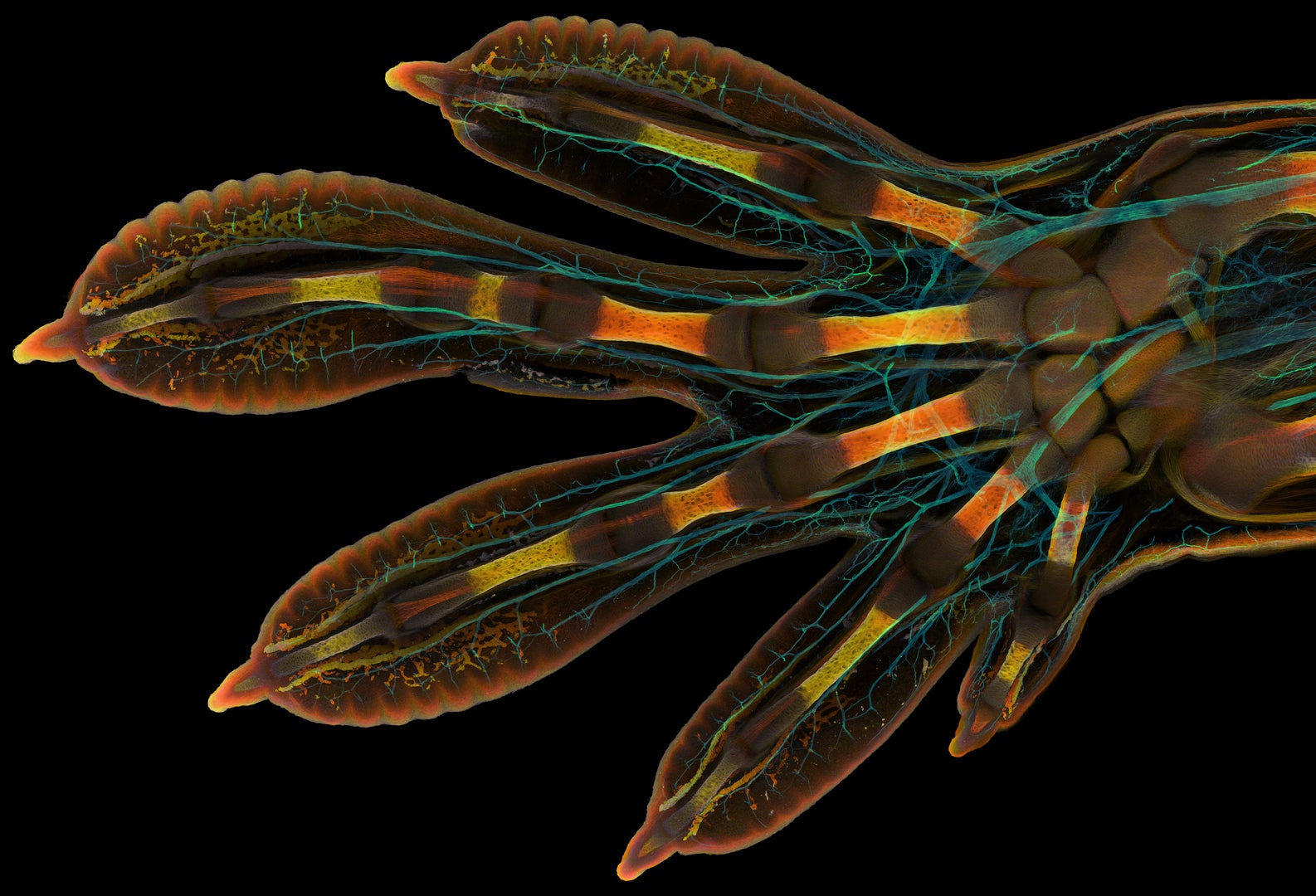
The first-prize image shows the embryonic hand of a Madagascar giant day gecko (Phelsuma grandis). It was taken by Grigorii Timin, a PhD student at the University of Geneva’s Department of Genetics and Evolution, under the supervision of Michel Milankovitch. To do so, Timin had to photograph the hand using a confocal microscope, then he had to merge together hundreds of images. But the net result provides a thorough look at the gecko’s nerves, bones, tendons, ligaments, skin, and blood cells.
“This particular image is beautiful and informative, as an overview and also when you magnify it in a certain region, shedding light on how the structures are organised on a cellular level,” said Timin in a statement provided by the contest.
The Not-So-Faux Spider
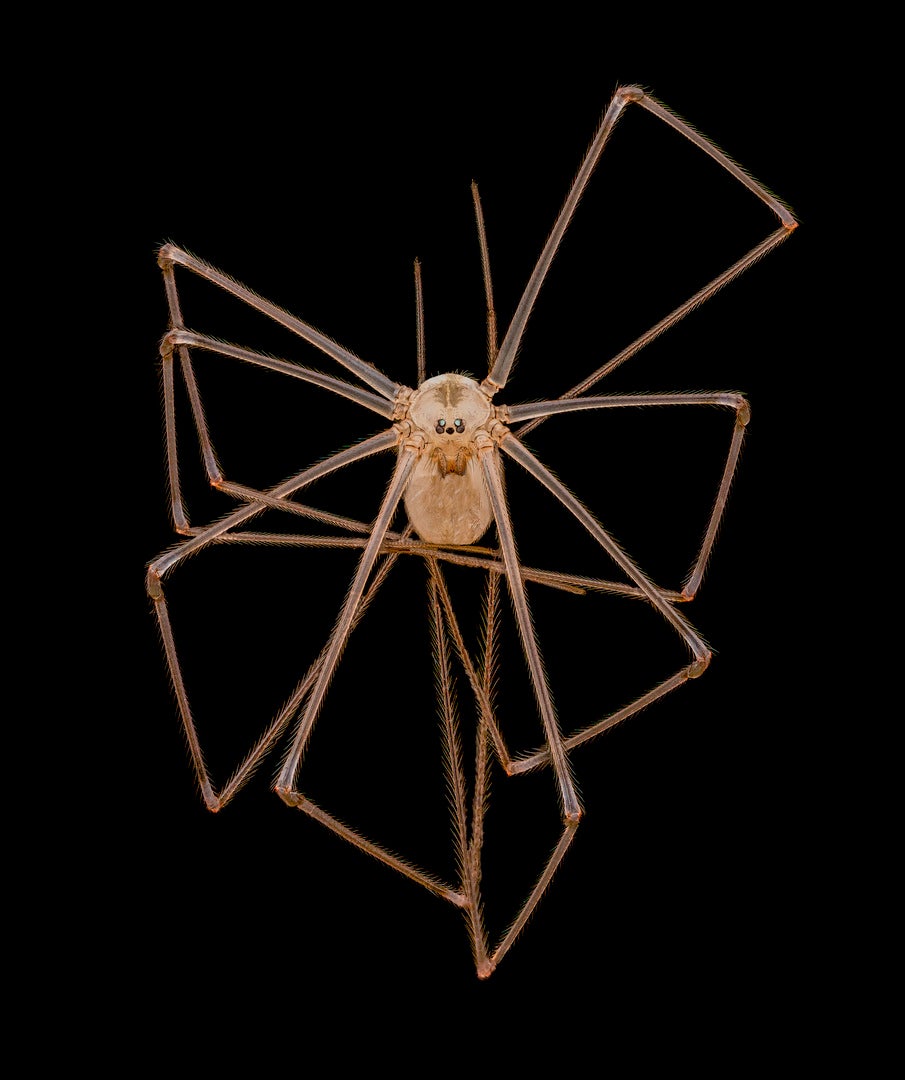
There are actually two groups of arachnids that have species that are sometimes referred to as “daddy long legs.” The more commonly named long legs belong to the order Opiliones and are actually closer relatives to mites and other arachnids than they are to spiders. This fourth-place image, taken by Andrew Posselt, showcases a member of the species Pholcus phalangioides, which truly are spiders. But whatever the type of daddy long legs you’re talking, neither is harmful to humans.
Psychedelic Larva
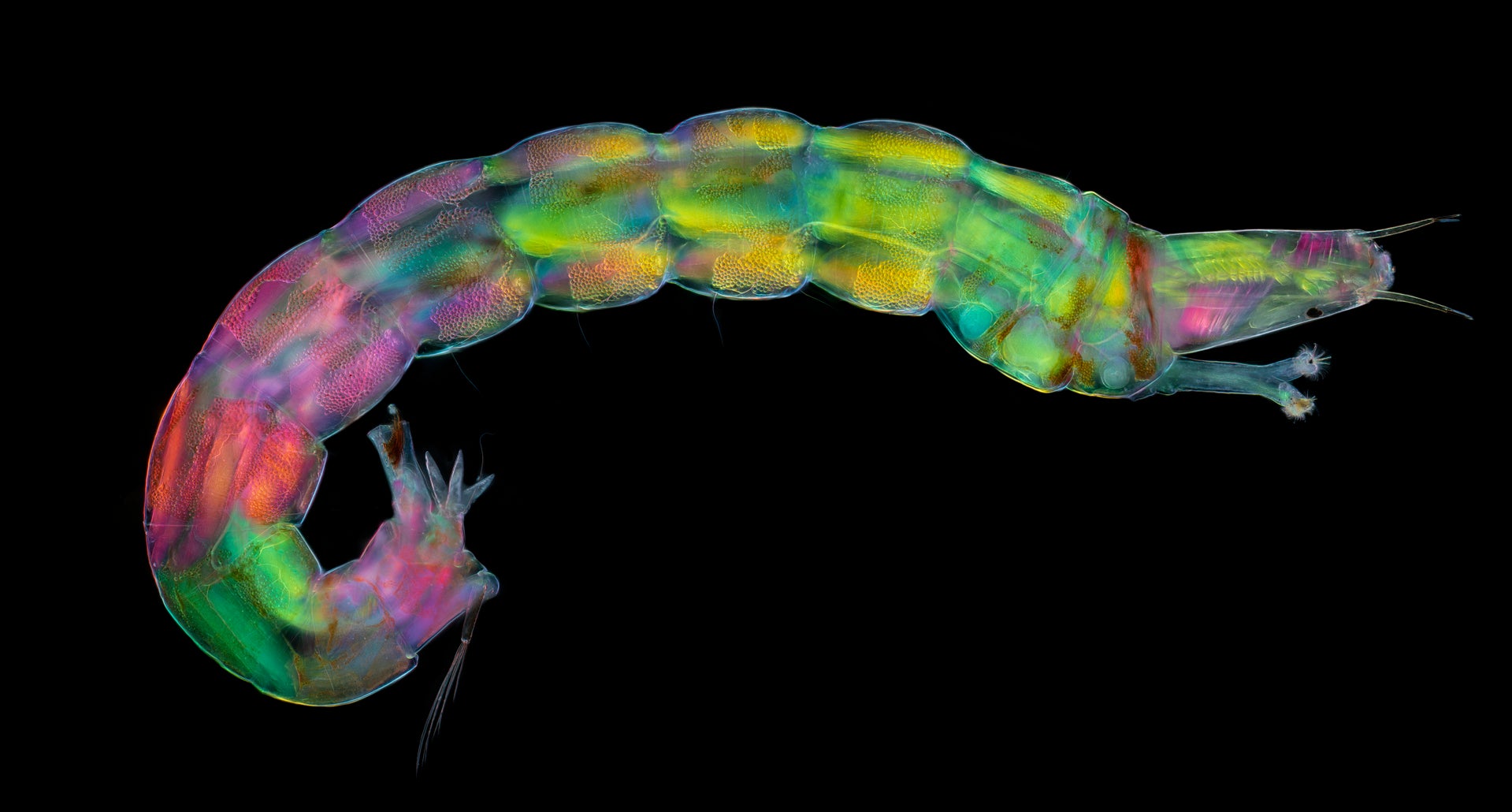
This honorable mention was taken by Karl Gaff from Dublin, Ireland. The trippy-looking image is of a midge larva collected from a freshwater pond and was taken using polarised light.
A Slimy Mould
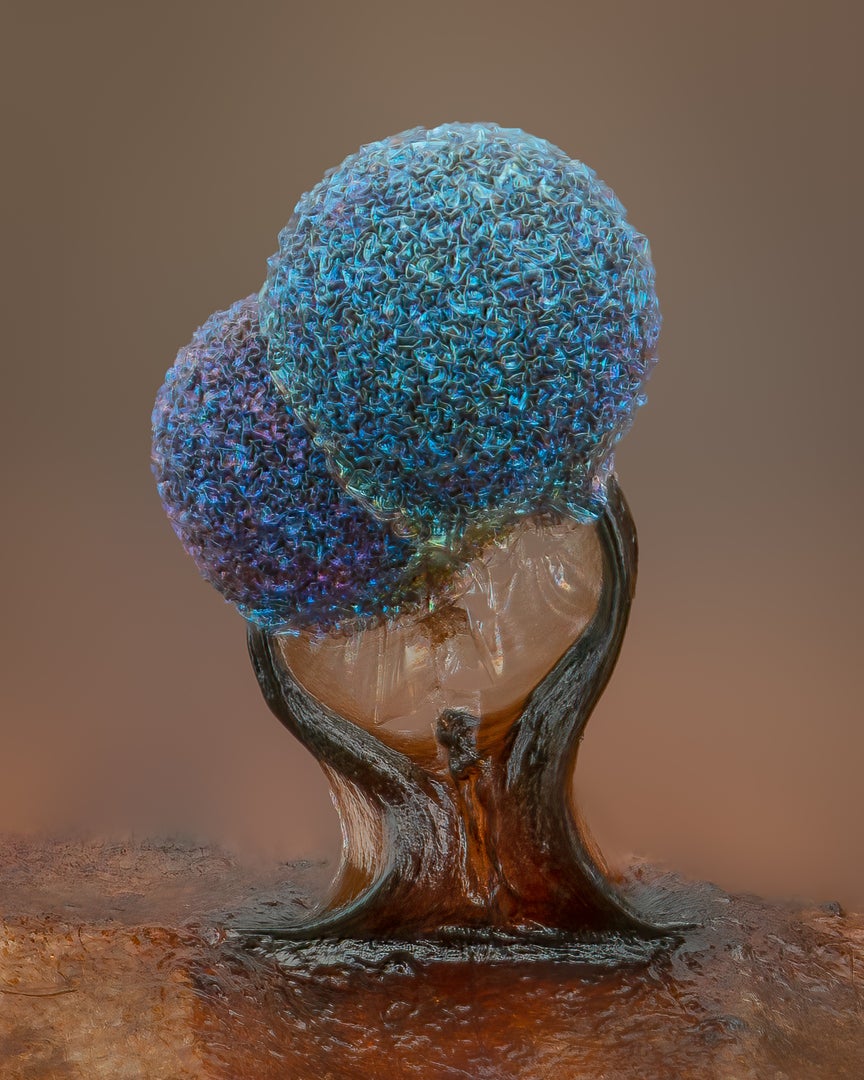
This fifth-place winner, taken by Alison Pollack, is of a genus of slime mould known as Lamproderma. Slime molds are some of the most unique and barely understood living beings in the world. Once thought to be a group of fungi, they’re now known to be several unrelated groups of protists. What ties them together is their ability to shift from different forms of life depending on the occasion, from free-living single cells to colony-like multicellular bodies that produce spores.
The Reddest Algae
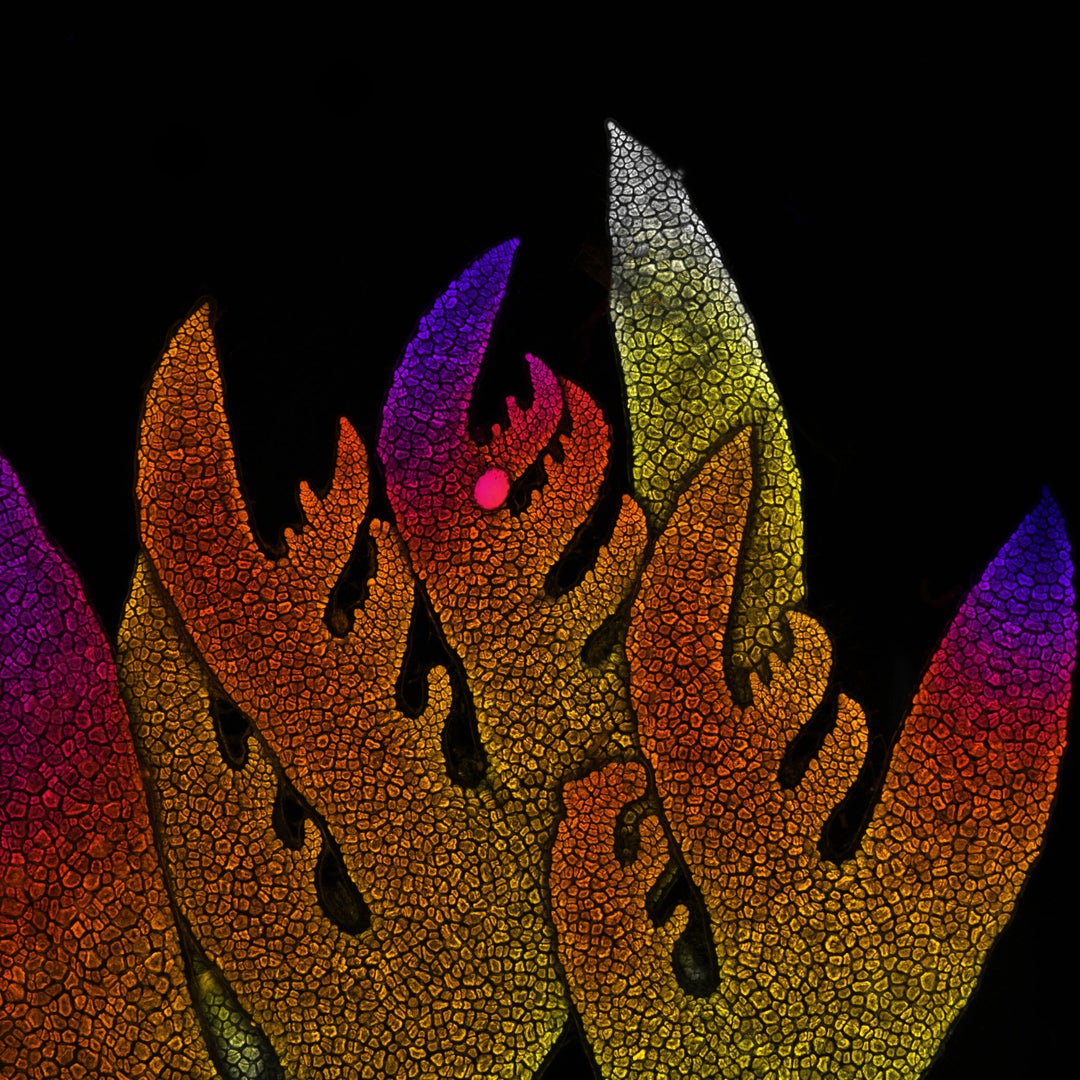
The eight-place entry is by Nathanaël Prunet, a biologist at the University of North Carolina at Chapel Hill. It shows the tip of a species of red algae. These algae primarily live in seawater environments. Like many algae, these species are not technically considered plants, though they do share several features in common, such as the use of chlorophyll for photosynthesis. Humans have long used them as a source of food and natural dyes.
Stars Beneath the Ocean
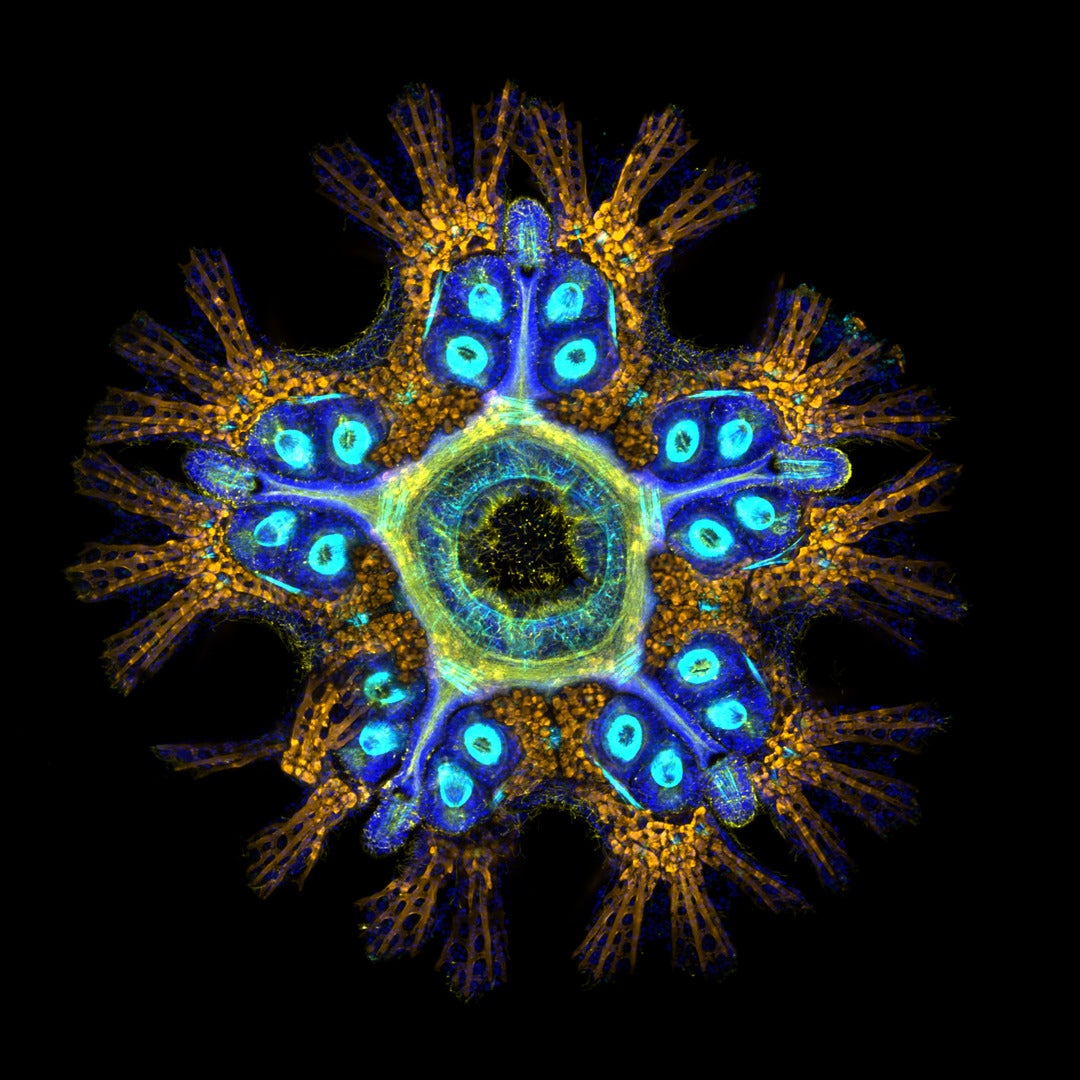
This honorable mention was taken by Laurent Formery of the University of California, Berkeley. It depicts a two-month-old juvenile sea star of the species Patiria miniata. These beautiful creatures are sometimes known as sea bats or bat stars for their webbed appearance. They can come in a variety of colours but are often reddish-orange, and they’re especially abundant off the coast of Central California.
Insect Collision
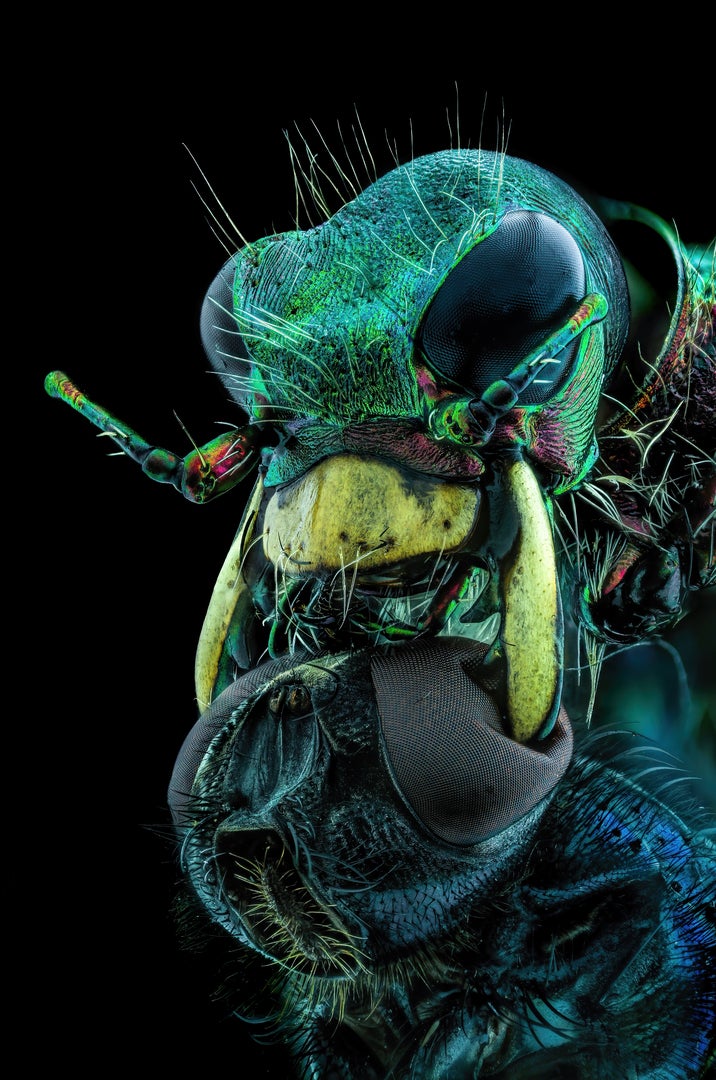
The 10th-place winner, taken by Murat Öztürk in Ankara, Turkey. Though it might be hard to tell, this shows a fly nestled under the chin of a tiger beetle. One species of tiger beetle, the Australian tiger beetle (Cicindela hudsoni) is considered the fastest known insect, clocking in with a max speed of 10 km per hour, or at a relative speed as high as 171 body lengths per second. Put another way, if a human could match that many body lengths per second, they’d be close to breaking the speed of sound.
Tongue Biome

This 19th-place winner was taken by Tagide deCarvalho at the University of Maryland. It shows a biofilm of bacteria surrounding a single human tongue cell. Biofilms are sticky clusters of bacteria, which often allow the bacteria to survive otherwise inhospitable environment or human weapons like antibiotics. On the tongue, biofilms can be a common source of bad breath and other dental problems.
A Precious Egg

This honorable mention was taken by Ye Fei Zhang somewhere in Jiangsu, China. It shows the egg of an unidentified species of butterfly.
A Heart Cell’s Beginning
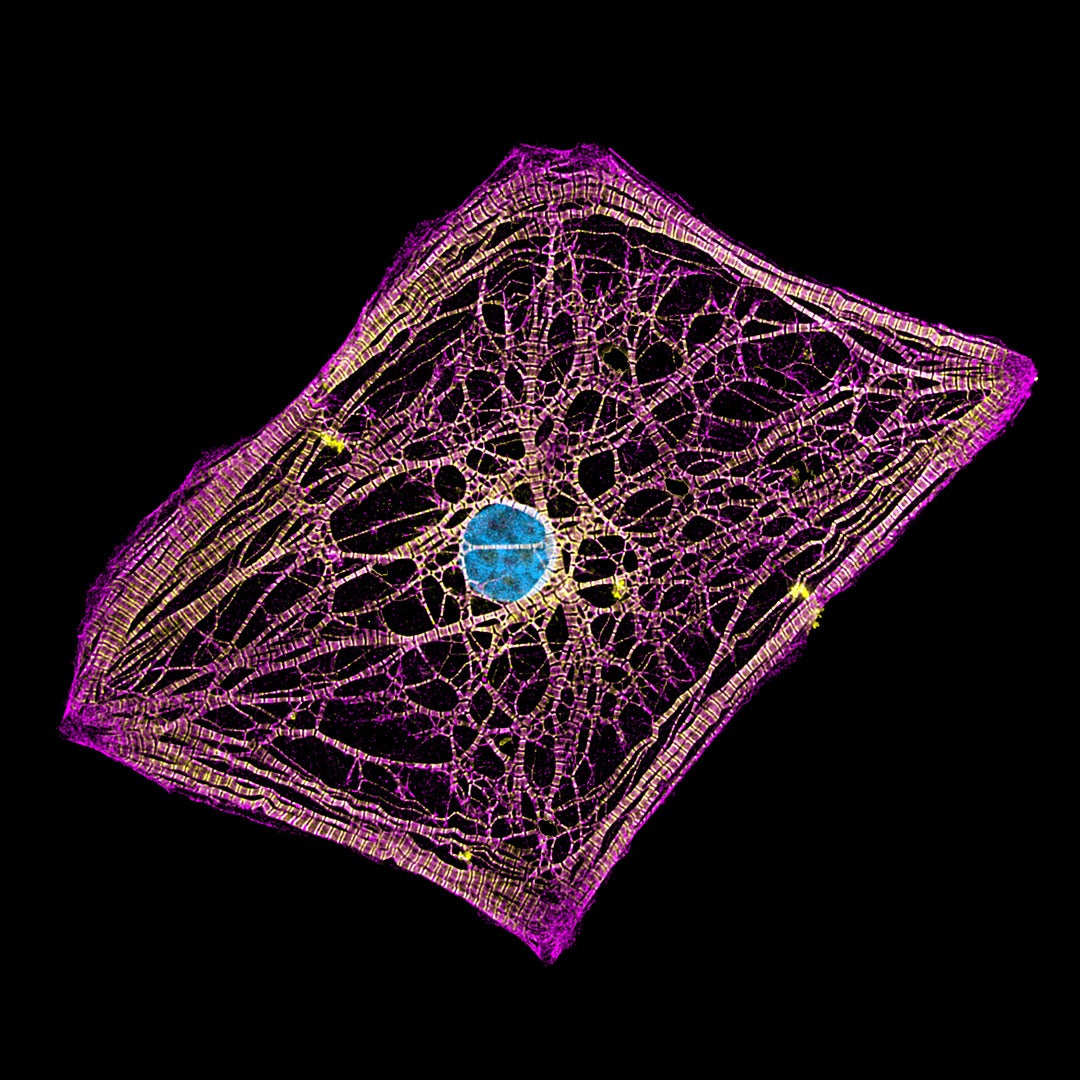
The 20th-place winner was taken by Hui Lin and Kim McBride at the Nationwide Children’s Hospital’s Centre for Cardiovascular Research in Ohio. It shows one of the major groups of heart cells in humans, cardiomyocytes, being derived from induced pluripotent stem cells, which can become almost any other type of cell. Cardiomyocytes in particular allow the heart to contract and pump blood around the body, and some are specialised to act as the heart’s natural pacemaker.
